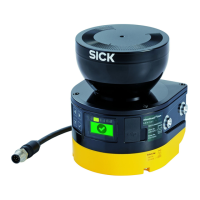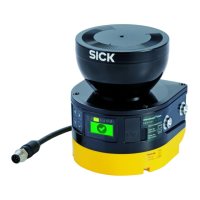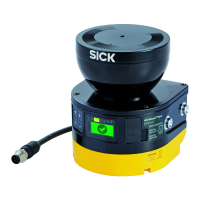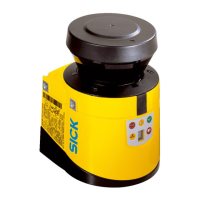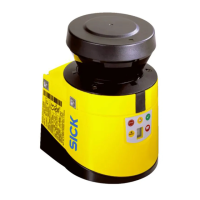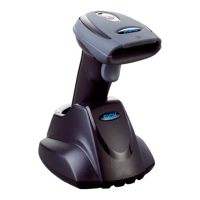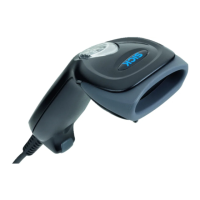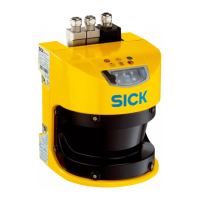NOTE
If t
he protective field needs to be as small as possible, you may have to calculate the
minimum distance multiple times with different scan cycle times (iterative calculation)
because of various dependencies.
3)
Always take the actual response time into account when calculating the minimum
distance, see "Response times", page 186.
1. First calculate the minimum distance on the basis of the response time for a small
scan cycle time.
2. If the calculated minimum distance is larger than the resulting protective field
range (see "Protective field range", page 189), recalculate the minimum distance
on the basis of the response time for a large scan cycle time.
4.3.6.2 Calculating minimum distance
Overview
T
he calculation of the minimum distance is based on international or national stand‐
ards and statutory requirements applicable at the place of installation of the machine.
If the minimum distance is calculated according to ISO 13855, then it depends on the
following points:
•
Machine stopping time (time interval between triggering the sensor function and
the end of the machine’s dangerous state, including signal propagation times in
the network and processing time in the control)
•
Response time of the protective device, see "Response times", page 186
•
Reach or approach speed of the person
•
Resolution (detection capability) of the safety laser scanner
•
Type of approach: parallel
•
Parameters specified based on the application
•
Supplements for general and, possibly, reflection-based measurement errors
•
Supplement to protect against reaching over
•
Height of the scan plane
•
Switching time between monitoring cases
Important information
NOTE
Mor
e information is available in the ISO 13855 standard and in the Guide for Safe
Machinery.
NOTE
SIC
K offers a stopping/run-down time measurement service in many countries.
Calculation example of the minimum distance S according to ISO 13855
The example shows the calculation of the minimum distance for parallel approach
to the protective field. Depending on the application and the ambient conditions a
different calculation may be required. (e.g., a protective field or at an arbitrary angle to
the direction of approach or an indirect approach)
b
Calculate S using the following formula:
S = 1600 mm/s × T + TZ + Z
R
+ C
where:
3)
T
he required minimum distance depends on the response time, among other things, and therefore on the scan cycle time. The protective
field range likewise depends on the scan cycle time: the protective field range is shorter for a faster scan cycle time.
4 P
ROJECT PLANNING
36
O P E R A T I N G I N S T R U C T I O N S | microScan3 Pro I/O 8025424/1ELL/2022-01-21 | SICK
Subject to change without notice
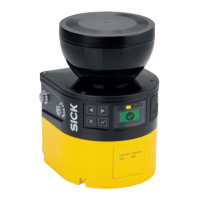
